Kitchens without wall cabinets – 10 smart alternatives to conventional wall cabinets
Boost the sense of space and create more decorative opportunities in your kitchen

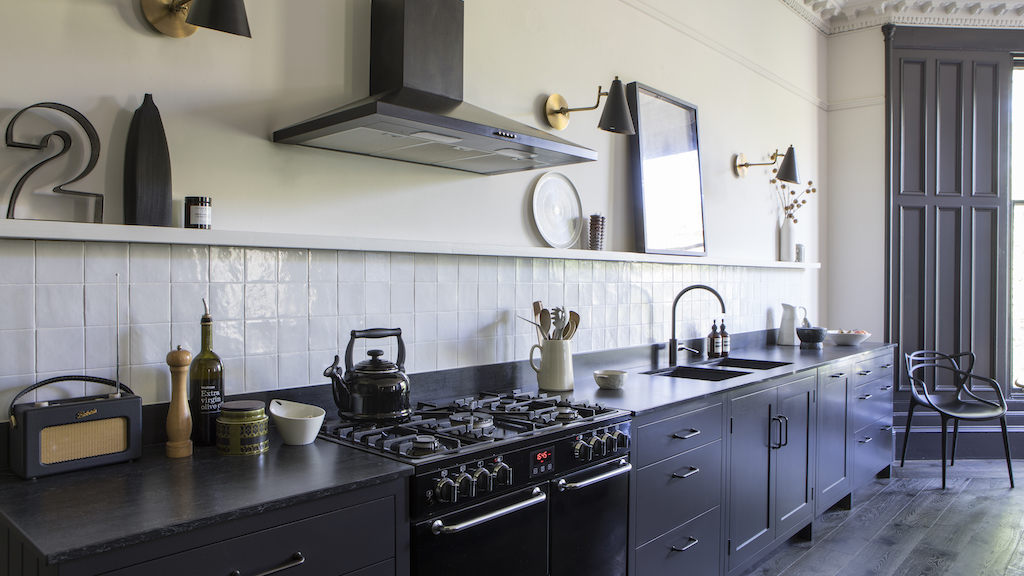
Always assumed wall cabinets play a crucial role when considering how to design a kitchen? Not necessarily. The rise of a more relaxed approach to living alongside the emergence of open-plan kitchen ideas has loosened traditional kitchen planning rules, and led to more creative kitchens without wall cabinet ideas.
The latest kitchen wall ideas are more about injecting personality, and less obsessed with cramming every available inch with cupboards. ‘In my own recent kitchen renovation, I happily ditched wall cabinets in favour of open shelves,’ says Ideal Home Editor-in-chief Heather Young.
‘I wanted the kitchen to feel open, light and airy, without wall cupboards encroaching on the sense of space. I didn't want the room to feel like a tunnel with cupboards pressing in on each side.’
There are many advantages to ditching wall cabinets but one of the most noticeable will be on your pocket. Unless they’re gold-lined, shelves are always going to prove less expensive. Crossing wall cabinets off your kitchen shopping list will make the final tally more palatable. And we promise you won’t miss hitting your head on that wall cupboard door that’s been left open!
Ideas for kitchens without wall cabinets
Seeking alternative solutions to wall cabinets needn’t require serious storage sacrifices, either. Be inspired by our ideas for kitchens without wall cabinets and enjoy a more spacious kitchen full of colour and interest.
1. Stick to a single shelf

If your decision to swerve wall cabinets is motivated by small kitchen ideas, don’t be tempted to fill the void with racks of shelving, rails etc. Less is more, and the mono shelf is one of our favourite emerging kitchen trends for 2023. A single shelf stretching the width of one wall, or pitched either side of a cooker hood, is a more restrained approach to open shelving but no less impactful.
‘The two obvious disadvantages to open shelves are you need to keep them tidy, and the contents will get dusty – and potentially greasy if they’re near the hob. If you don’t mind regular cleaning and relish the idea of regularly reorganising your shelves, then this need not be a barrier, but you can make life a little easier with just one long shelf within easy reach,’ says Brani Hadzhi, co-founder and showroom manager, Scavolini by Multiliving.
Sign up to our newsletter for style inspiration, real homes, project and garden advice and shopping know-how
You can also use a single shelf as a capping point for splashbacks. ‘Cladding the wall below in a beautiful stone makes for a more attractive view when seen from an adjoining living room,’ adds Brani.
2. Take tiles to the top
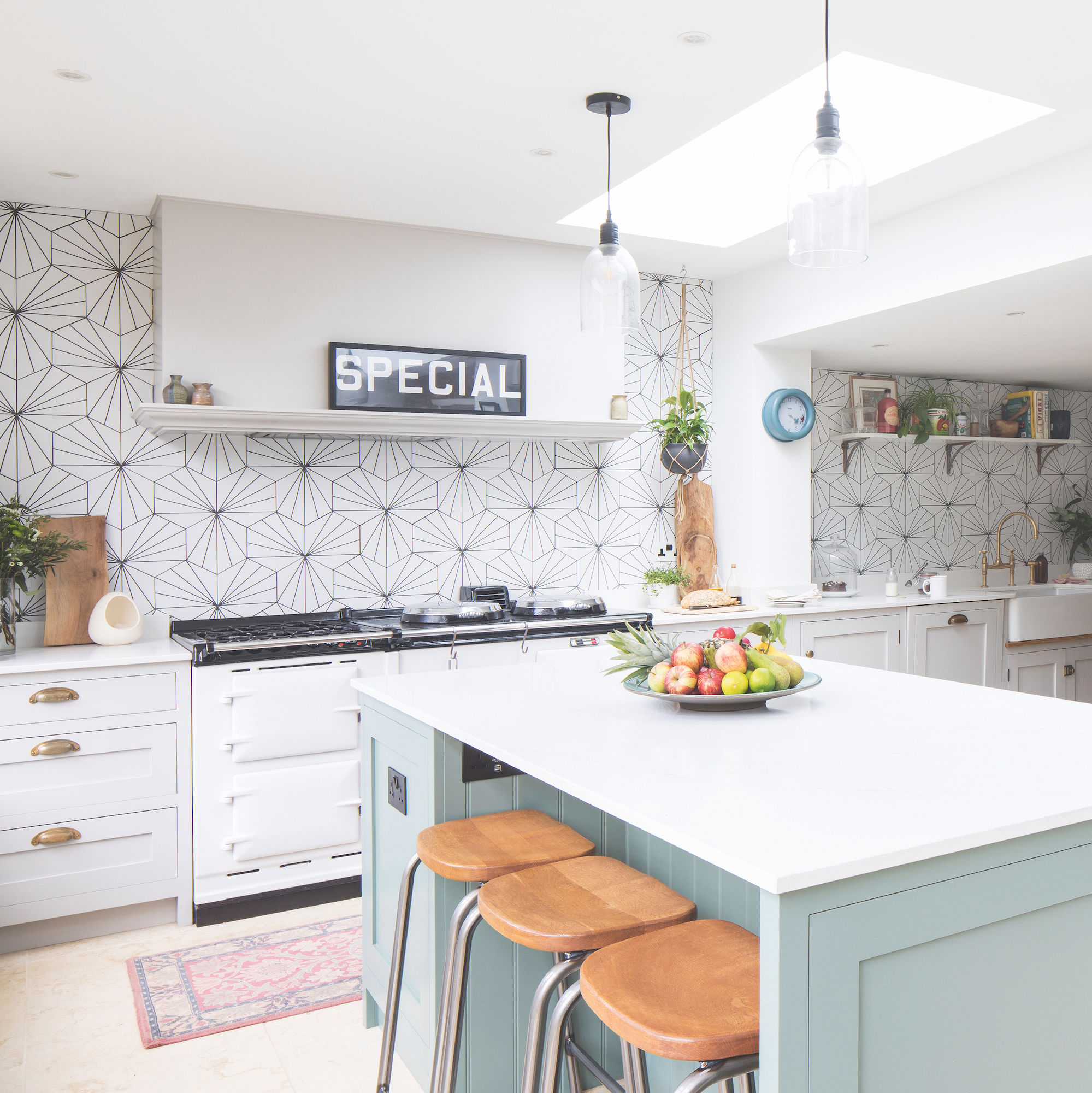
With plenty of wall space to spare, a wall cabinet-free kitchen is a brilliant opportunity to flex the latest wall tile trends. Here, chic monochrome tiles reach right to the ceiling for maximum impact, beautifully framing the traditional chimney-style cooker hood.
‘One drawback of choosing tiles over cabinetry is the grout lines can prove hard to keep clean,’ says Rebecca Northmore, design manager, HUX. ‘Using dark grout will help matters considerably. Also consider applying protective sealer to fully dried grout, especially around key splash zones like the cooker and sink.’
3. Flex your artistic skills
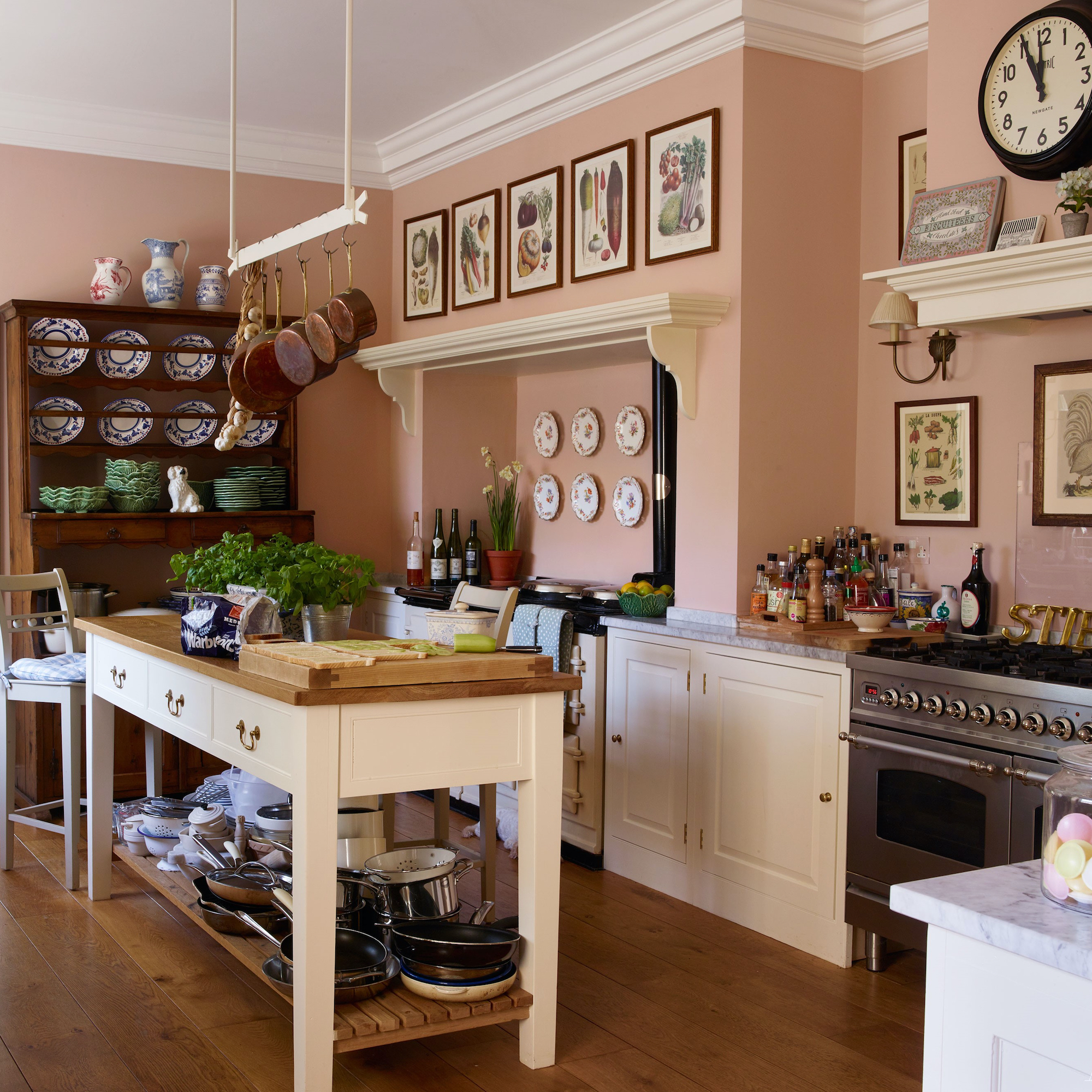
Using kitchen walls for artwork helps to make the room feel less generic and more personal –a great way to inject your unique sense of taste and style. Wall-hung plates are particularly practical in the kitchen as they’re moisture-proof and easy to clean, go for dishwasher-safe if possible!
It’s wise to avoid hanging investment or sentimental art in the kitchen. Whatever the value, Art should be positioned where it won’t get damaged by water or heat. Here, the mantle provides a layer of protection, as well as a natural line-up point for a row of prints.
‘Colourful kitchens have been enjoying a renaissance, and we’re seeing brighter colours on walls. An absence of top cupboards really opens up this kitchen, allowing the dusky pink paint colour and artwork to add character and personalise the space,’ says Emma Bulmer, head colour consultant, Edward Bulmer Natural Paints.
4. Seek out fancy brackets

They may not sound particularly glamorous but don’t underestimate the power of shelf brackets to zhuzh up your kitchen décor. Decorative shelf brackets, in interesting materials and shapes, are now readily available to suit a wide range of budgets and can really influence the design direction.
For example, ornate wrought ironwork brackets work well in a country kitchen, while burnished brass or copper can add a vintage touch to shelving displays. For an industrial look, try matt black or cast-iron brackets in simple shapes. Leather strap or rope-style brackets will provide an extra layer of texture that helps soften the hard lines found in kitchens.
The higher the shelving, the greater the visual impact of decorative brackets. Here, simple steel brackets complement the finish on appliances and hardware to create a beautifully coordinated space. Strung with fairy lights, the brackets are softly illuminated by night.
5. Don't sacrifice storage
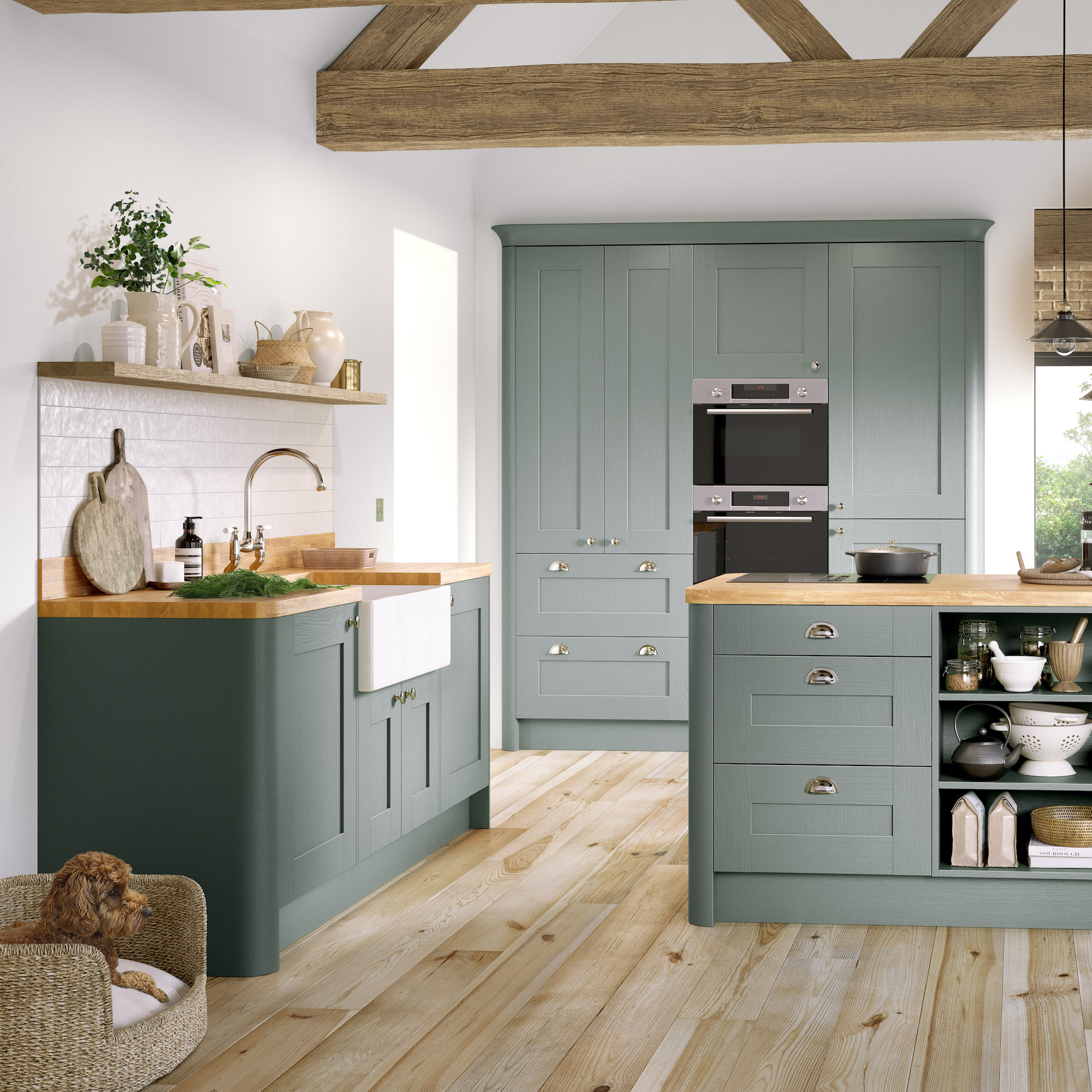
If you want to create a kitchen scheme without wall cabinets but can’t afford the storage loss, opt for one wall of floor-to-ceiling units and leave the rest top-cupboard free, recommends Neil McDonald, design manager, Moores.
‘Full-height cabinets are a great way to maximise storage, making the most of every inch of space. They can incorporate large appliances such as the oven, as well as fully-integrated cooling, and the interiors can be carefully planned to store in the most space-efficient, organized manner. Taking care of so much in one area allows you to leave other walls more open, creating the illusion of a larger kitchen,’ says Neil.
6. Shelve it all out

Swapping cabinets with solid doors for simple open shelving throughout will lighten the load visually and provide readily accessible storage where everything you need is easy to spot in a quick glance.
‘I’m a big fan of open display shelving in small kitchens; closed wall cabinets can dominate and enclose the room. When space is tight, open shelving is best reserved for frequent-use items, there is simply no space to waste on pretty but unpractical displays,’ says George Miller, home designer, Neptune.
Do use the shelving itself to make a design impression. Here, black metal supports lend an industrial edginess with timber shelves adding a more laidback, rustic vibe. Using shelving to store everyday items can actually work out better on the housework front. ‘As they are regularly washed, everyday crockery and glassware won’t be sitting there for long periods of time collecting grease and dust,’ adds George.
7. Style shelves like a pro

Larger kitchens afford the opportunity to use shelving purely for display purposes – so harness your inner stylist and polish up those #shelfie skills. We love how the black backdrop to this impressive floating shelf with hidden fixings brings the items displayed into sharp relief. Note how the mix of height and shape provides far more interest and movement than you’ll get from rigidly symmetrical arrangements.
Follow the lead of professional stylists and organise collections of matching items in threes or fives, rather than even numbers, and don’t be afraid of empty space – it allows the eye to rest and prevents excessive clutter.
8. Add vintage finds

Mixing old and new in the kitchen will imbue the space with relaxed character where the rigidity of fully fitted kitchen units can so often fall short. Vintage kitchen ideas include freestanding bookcases and dressers that can be used in lieu of fitted wall cabinets to provide a visual break from the precision of modern furniture.
‘Freestanding elements can easily be painted to provide a pop of colour and bright focal point in a neutral scheme,’ agrees interior design Leisha Norman. ‘Whether your style is naturally eclectic or more coordinated, incorporating just one eye-catching vintage piece can make a yield big rewards.’
9. Fit some rails
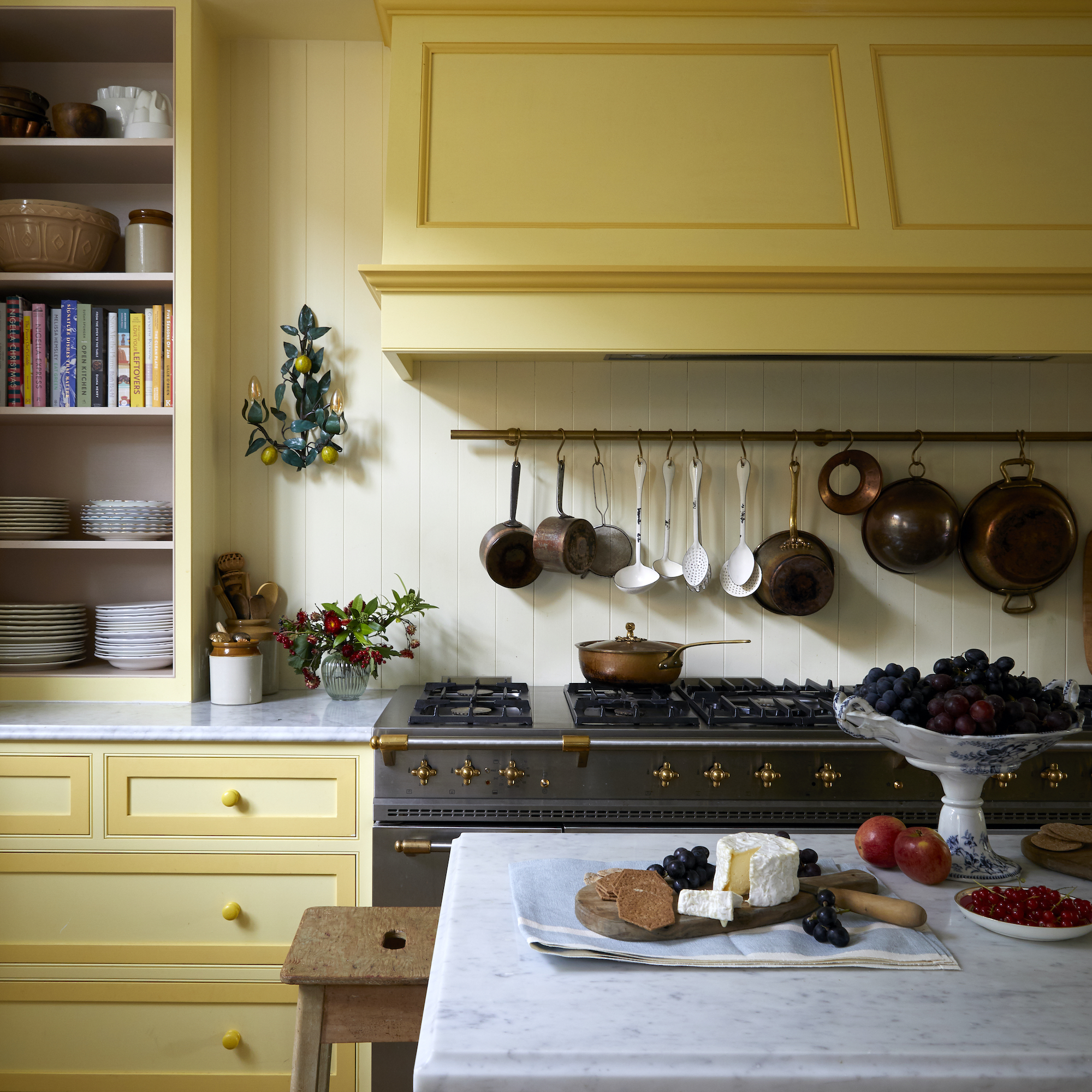
Always in reach and close to hand, storing kitchen contents on rails instead of wall cabinets makes a lot of sense. ‘Pots and pans often take up lots of space in cupboards, so using rails is not only a great space saver but also a more convenient storage method, as you won’t need to re-arrange your entire cupboard to find the one pan you’re looking for,’ enthuses Looeeze Grossman, founder of The Used Kitchen Company.
‘Rails can also be aesthetically pleasing by adding character and making a kitchen feel less clinical. They are a great way to showcase your pans/utensils, especially if they’re colour-coordinated with other finishes in your kitchen, instead of keeping them hidden away in cupboards or drawers,’ adds Looeeze.
10. Wire in some wall lights
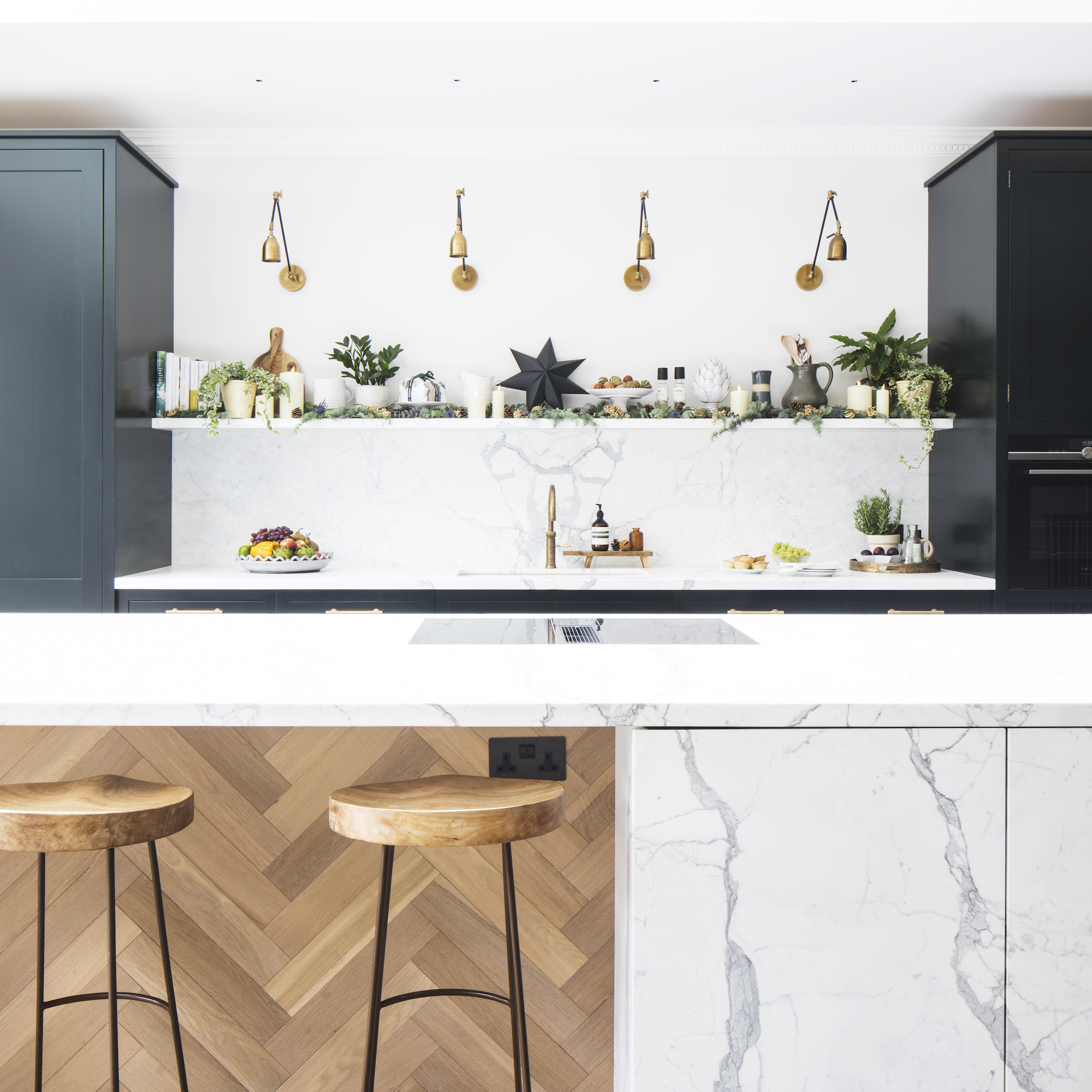
More typically featured in living room wall lighting ideas, the presence of wall lights is growing in the kitchen as the ‘fitted’ look of wall units gives way to relaxed open shelving. For your kitchen lighting ideas choose adjustable wall lights suitable for use with high wattage bulbs if they are to be used as task lighting when prepping or baking and install dimmer controls for extra light level flexibility.
‘Stylish wall lights are a great alternative to ceiling downlights and will add an extra design feature on emptier walls,’ says Rohan Blacker, founder, Pooky. ‘Set on separate circuits, they are great for layering with overhead and task lighting. Used alone, they’ll provide softer, ambient illumination in the evening.’
Do you need wall cabinets in a kitchen?
The simple answer is no, you don’t need wall cabinets, argues Brani Hadzhi of Scavolini by Multiliving. ‘If you have a small, narrow galley kitchen for example, wall cabinets can dominate the space. By contrast, open shelves are less bulky, and simply being able to see the wall behind gives the illusion of more space,’ says Brani.
Even if a kitchen is more generous in size, some people prefer to do without wall units simply because they have enough storage elsewhere. ‘This frees-up the walls for beautifully styled shelves or fabulous pieces of art that will inject colour and character into the kitchen, giving it a very personal feel,’ she adds.
‘There is also the argument that shelves are easier to access than wall cupboards. You can quickly grab an extra bowl for the breakfast table or plate for that last-minute dinner guest. Plus, they’re a convenient spot for items you cook with regularly, such spices and utensils.’
What to do if your kitchen has no cabinets?
‘You could try installing open shelving instead,' says Charlie Smallbone, founder, Ledbury Studio. 'A word of caution, though: it’s easy to let shelves get cluttered, so you’ll need to think about how to keep your shelves looking neat and tidy. If you’re not a natural-born organiser, open shelving may not be the best option for you.
‘Some clients like to team shelving with rails, so that they can hang essentials within easy reach. Choosing a warm metal like brass for the rail adds a great accent too,' adds Charlie.
'Something else I like to include is a cupboard that rests on a dropped-down section of countertop. It creates more storage space than your average wall cupboard and is great for storing small appliances or bulky storage jars that you want to keep out of sight but easily to hand.’

Linda Clayton is a professionally trained journalist, and has specialised in product design, interiors and fitness for more than two decades. Linda has written for a wide range of publications, from the Daily Telegraph and Guardian to Homes & Gardens and Livingetc. She has been freelancing for Ideal Home Magazine since 2008, covering design trends, home makeovers, product reviews and much more.